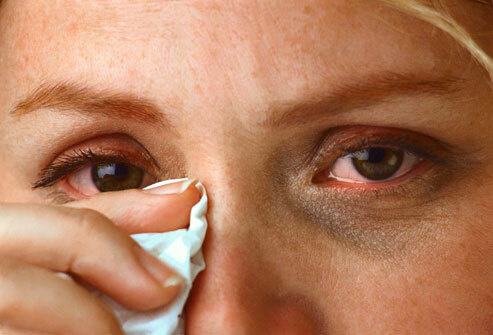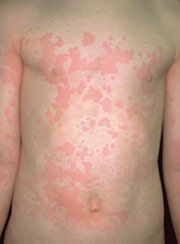Allergic rhinosinusopathy: symptoms and treatment
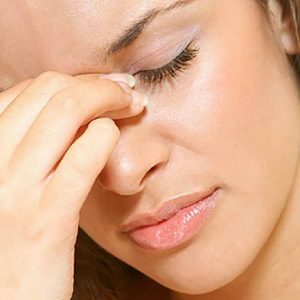
Allergic rhinosinusospasm - is an inflammatory pathology that affects mucous nasal membranes and paranasal sinuses.Allergic rhinosinusopathy is most common among children and young people under 25 years old.
Contents: What does it come about?Symptoms of allergic rhinosinusopathy What is the danger?Diagnostic methods Treatment of allergic rhinosinusopathyFrom what does it arise?
Allergists identify a number of reasons that can trigger the development of allergic rhinosinusopathy.
These are the following factors:
-
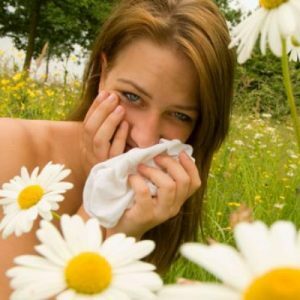 smoking;
smoking; - adverse environmental conditions;
- adenoiditis;
- disorders of intestinal motility;
- long and uncontrolled reception of certain medications;
- hereditary predisposition;
- weakened immune system;
- broncho-pulmonary diseases that occur in chronic form;
- disorders in the functioning of the gastrointestinal tract;
- increased susceptibility to colds and respiratory diseases.
Important! The main cause of allergic rhinosinusopathy is an increased tendency to allergic manifestations.Only if a person is susceptible to various kinds of allergies, with additional , the effect of provoking factors starts to develop rhinosinusopathy!
Often, the appearance of allergic rhinosinusopathy results in the work of a person in harmful production, which is due to the penetration of chemicals into the respiratory tract. Provoke this pathological process and various kinds of allergens( primarily vegetable, but also food and medicament).
Note: For effective therapeutic action, it is very important to identify the causes of rhinosinusopathy so that provoking factors can be eliminated!
Symptoms of allergic rhinosinusopathy
Manifestations of allergic rhinosinusopathy are similar in many respects to those characteristic of common rhinitis.
According to physicians, the following clinical signs are observed in patients with this disease:
-
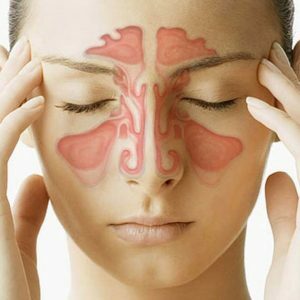 difficulty in breathing;
difficulty in breathing; - paroxysmal sneezing;
- mucous nasal discharge;
- sensation of gravity and pressure in the region of the head, paranasal sinuses;
- small cough;
- tinnitus;
- puffiness( near the nose and face).
If the pathological process proceeds in chronic form, the patients, as a rule, complain of severe headaches that occur every day .The person is broken working capacity, develops nervousness and irritability.
Important! When infection of the mucous membranes begins to affect the sinuses( trellis labyrinth and maxillary sinuses), which usually proceeds in acute form.
In this case, the following symptoms appear in patients:
- febrile;
- increased body temperature;
- sleep disorders;
- a permanent lack of appetite;
- pain syndrome;
- impairment of the olfactory function.
Allergic rhinosinusopathy is often accompanied by other manifestations: patients are troubled by cough syndrome, lacrimation, skin rashes like urticaria, pruritus, etc.
The patient as a whole is not feeling well, becomes weak, anxious, apathetic.In young patients suffering from rhinosinusopathy, the ability to learn and concentrate is reduced, memory is broken, children become distracted and capricious.
Note: Depending on the allergen provoking the whole pathological process, the symptoms of allergic rhinosinusopathy may not be manifested year-round, but only seasonally.
What is the danger?
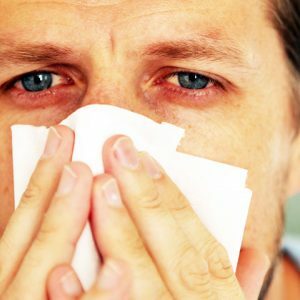 Allergic rhinosinusopathy, in itself, does not pose a mortal danger to a patient's health, but significantly reduces the quality of his life .The patient is constantly tormented by the difficulty of nasal breathing, which adversely affects the state of the nervous, cardiovascular and respiratory system.Children with diagnosed allergic rhinosinusopathy may lag behind in development from their peers.
Allergic rhinosinusopathy, in itself, does not pose a mortal danger to a patient's health, but significantly reduces the quality of his life .The patient is constantly tormented by the difficulty of nasal breathing, which adversely affects the state of the nervous, cardiovascular and respiratory system.Children with diagnosed allergic rhinosinusopathy may lag behind in development from their peers.
Note: Allergic rhinosinusospasm leads to the development of complications affecting adjacent paranasal sinuses.Such patients often suffer from sinusitis, frontal sinusitis.Often with allergic rhinosinusopathy, bronchial asthma develops.
In particularly severe clinical cases, when allergens are inhaled against allergic rhinosinusopathy, the patient may develop asphyxia.
Therefore, when there are clinical signs indicating this allergic disease, it is necessary to contact a specialist to clarify the diagnosis and prescribe an appropriate therapeutic course that will help alleviate the condition and prevent the development of complications typical for allergic rhinosinusopathy!
Diagnostic methods
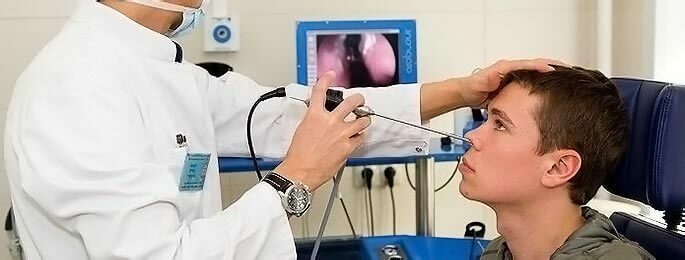
If you are suspicious of allergic rhinosinusopathy, the first thing to do is to seek professional advice from a competent otolaryngologist! This ailment can not be diagnosed by yourself!
Even a specialist, before making the final diagnosis, will assign the following types of studies to the patient:
- general and detailed laboratory blood test;
- carrying out allergy tests;
- take allergy-samples;
- X-ray examination;
- magnetic resonance imaging or computed tomography of the paranasal sinuses ;
- Rhinoscopy.
Important! Carrying out complex diagnostics gives the doctor the opportunity not only to make an accurate diagnosis, but also to identify the likely allergens provoking the development of allergic rhinosinusopathy, which is necessary for developing an effective therapeutic course!
Treatment of allergic rhinosinusopathy
Medication therapy
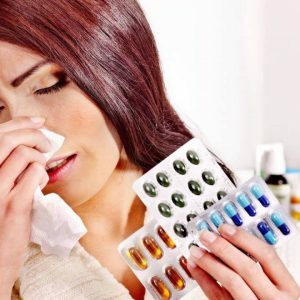 Treatment of allergic rhinosinusopathy should begin with the identification of possible allergens and their elimination.Only in this case, further therapy will have an effect and lead to the achievement of positive results.
Treatment of allergic rhinosinusopathy should begin with the identification of possible allergens and their elimination.Only in this case, further therapy will have an effect and lead to the achievement of positive results.
This disease should be treated, mainly by methods of drug therapy.After the diagnosis, the doctor individually prescribed anti-histamine and glucocorticosteroids , which are the most effective in a specific clinical case.
Note: The dosage and the optimal duration of the therapeutic course for allergic rhinosinusopathy should be determined exclusively by the doctor!
Antihistamines may be prescribed by courses or during a period of exacerbation of the pathological process, in order to facilitate the patient's condition.
In addition, since this pathological process almost always develops against the background of weakening of the immune system, patients are prescribed a course of vitamin therapy, as well as immunomodulating medications.
In some cases, specific immunotherapy may be recommended.This technique is very well proven in allergic diseases affecting the upper respiratory tract .In this type of procedure, a parenterally injected patient is given a provoking allergen, the dosages of which gradually increase.The duration of the therapeutic course is determined by the doctor on an individual basis.Treatment can last from 2 months to several years!
In addition, patients with diagnosed allergic rhinosinusopathy are recommended to wash the nasal cavity, which should be done daily!In the case of joining the infectious process, antibiotic drugs are prescribed.The course of antibiotic therapy lasts about 1.5-2 weeks.
The following are the auxiliary methods of treatment for this allergic disease:
- acupuncture;
- physiotherapy procedures;
- diet therapy.
Surgical methods
Surgical intervention for allergic rhinosinusopathy is recommended for patients only in exceptional, most severe and neglected cases. Indications for the operation may include the following factors:
- pathologies of the paranasal sinuses occurring in severe form;
- hypertrophy of the nasal concha;
- lack of effectiveness of conservative therapeutic methods;
- development of purulent processes.
Surgeons for allergic rhinosinusopathy can use the following techniques:
- resection of affected areas of the nasal cavity;
- surgical removal of nasal septum ridges;
- polypectomy.
The doctor selects the method of surgical intervention for each patient individually!
Additional recommendations
For the treatment of allergic rhinosinusospaty to be truly effective , , the patient should observe the following expert advice:
- to quit smoking;
- refrain from consuming alcoholic beverages;
- exclude from its daily diet products that can trigger the development of allergic reactions( chocolate, citrus, soda, coffee, fast food, strawberries, tomatoes, etc.);
- daily wet cleaning of the apartment;
- several times during the day to air the rooms;
- do the lavage of the nasal cavity;
- Walking in the open air
Please note: Do not self-medicate for allergic rhinosinusopathy and strictly follow all the recommendations of an otolaryngologist!
Preventative measures
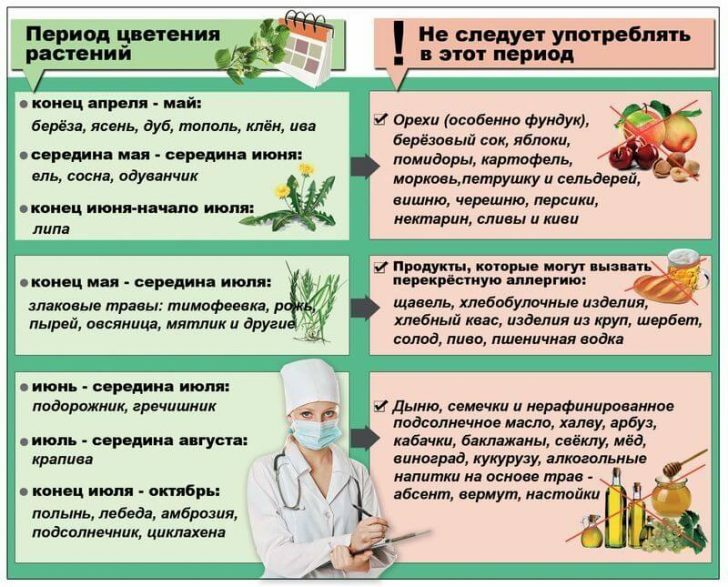
In order to prevent the development of allergic rhinosinusopathy, doctors are advised to observe the following rules:
- Maintain a healthy lifestyle.
- Try not to eat "synthetic" products with artificial colors, flavors, flavor enhancers.
- Maintain an optimal microclimate in the room, using special humidifiers.
- Keep the premises clean and free of dust.
- Strengthen immunity, take vitamin and mineral complexes.
- If you tend to allergic manifestations, use vasoconstrictive nasal drops, recommended by your doctor.
Prevention of allergic rhinosinusopathy begins with a careful attitude to your health, timely elimination of allergic reactions and regular visits to specialists such as an allergist and an otolaryngologist.Especially this applies to people working in hazardous production, having a high propensity to allergic reactions, smokers, people with weakened immune system.
Chumachenko Olga, medical reviewer

